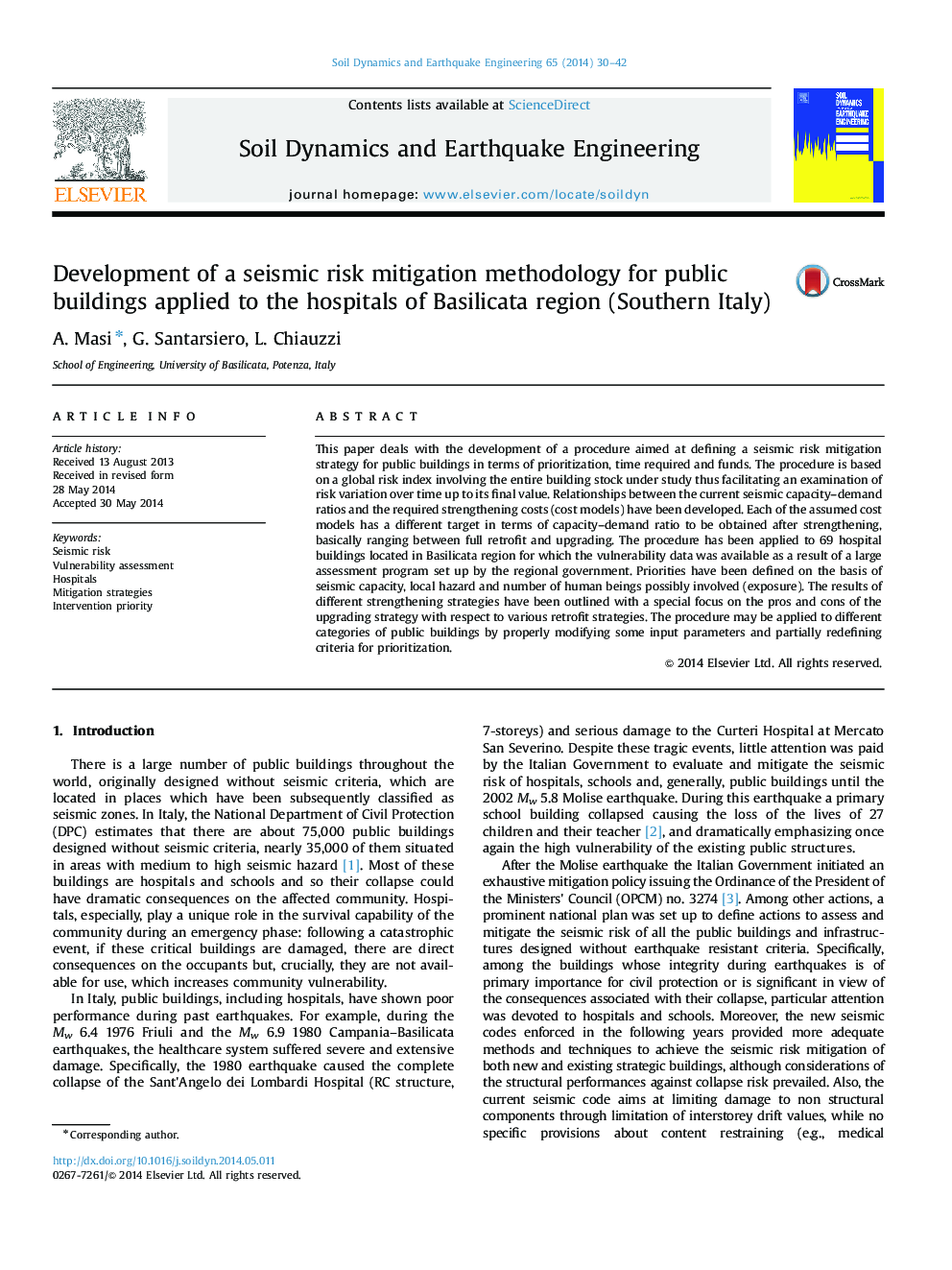| Article ID | Journal | Published Year | Pages | File Type |
|---|---|---|---|---|
| 6772517 | Soil Dynamics and Earthquake Engineering | 2014 | 13 Pages |
Abstract
This paper deals with the development of a procedure aimed at defining a seismic risk mitigation strategy for public buildings in terms of prioritization, time required and funds. The procedure is based on a global risk index involving the entire building stock under study thus facilitating an examination of risk variation over time up to its final value. Relationships between the current seismic capacity-demand ratios and the required strengthening costs (cost models) have been developed. Each of the assumed cost models has a different target in terms of capacity-demand ratio to be obtained after strengthening, basically ranging between full retrofit and upgrading. The procedure has been applied to 69 hospital buildings located in Basilicata region for which the vulnerability data was available as a result of a large assessment program set up by the regional government. Priorities have been defined on the basis of seismic capacity, local hazard and number of human beings possibly involved (exposure). The results of different strengthening strategies have been outlined with a special focus on the pros and cons of the upgrading strategy with respect to various retrofit strategies. The procedure may be applied to different categories of public buildings by properly modifying some input parameters and partially redefining criteria for prioritization.
Related Topics
Physical Sciences and Engineering
Earth and Planetary Sciences
Geotechnical Engineering and Engineering Geology
Authors
A. Masi, G. Santarsiero, L. Chiauzzi,
